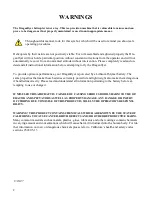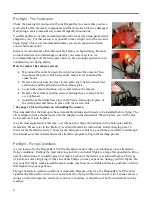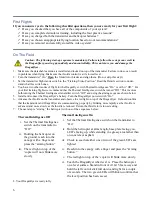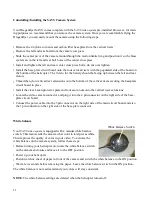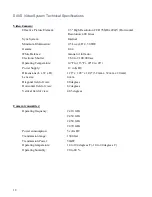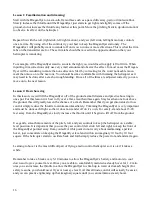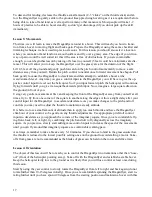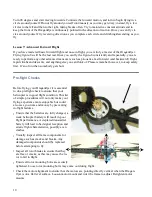
4
Preflight The Helicopter
Check the packing list enclosed with your Draganflyer to ensure that you have
received all of the necessary components and that none are broken or damaged.
If anything is amiss, immediately contact Draganfly Innovations.
Your Draganflyer was fully assembled and test flown before being packed and
shipped to you. For this reason, it is possible to take it right out of the box and
begin flying. This is not recommended unless you are an experienced radio
control helicopter pilot.
Instead, we recommend a little disassembly before you begin flying. Because
an inadvertent crash could damage or destroy your camera system, we
recommend taking it off the helicopter until you have enough experience to be
confident in your flying ability.
How to remove the camera system:
·
Disconnect the cable between the video board and the camera. Then
disconnect the power cable between the main circuit board and the
video board.
·
Remove the four nuts, the clear Lexan plate, the 4 nylon vertical riser
extensions, and the printed circuit board base plate.
·
Loosen the camera mounting screws and remove the camera.
·
Replace the camera mounting screws ensuring they are snug but not
overtightened.
·
Install the carbon fiber base plate (with Velcro facing up) in place of
the video board and fasten in place with the 4 acorn nuts.
* See page 11 for instructions on reinstalling the camera
.
The transmitter for the helicopter has a detachable antenna and it needs to be installed before flying. The
silver adapter on the antenna twists onto the adapter on the transmitter. When in place you will be able
to feel and see it lock in place.
As with most equipment of this type, you will need to charge the batteries for the helicopter and the
transmitter. Please refer to the “Battery” section in Details for instructions. Initial charging time 16
hours for the transmitter and 1.5 hours for the helicopter, so this is a good time to carefully read through
this manual as well as install and use the simulator program to begin the learning process.
Preflight Flying Conditions
As you learn to fly the Draganflyer SAVS and capture aerial video, you should pay close attention to
flying conditions. Perhaps the most ideal location for your initial flights is a large flat open field with no
nearby obstructions. It would be great if at least a portion of the field is covered in tall grass. This type
of location is more forgiving of those inevitable bumps you may experience during your first flights. Be
fore your first flight, walk around the area to make sure there are no hidden obstacles, potholes or debris
that might ruin your experience.
Paying attention to weather conditions is important. Because of its size, the Draganflyer SAVS can be
significantly affected by wind. You can learn best by flying in little or no wind. Also, because the elec
tronics on the helicopter are extremely sensitive to moisture, it should never be flown outdoors in rainy
weather.


